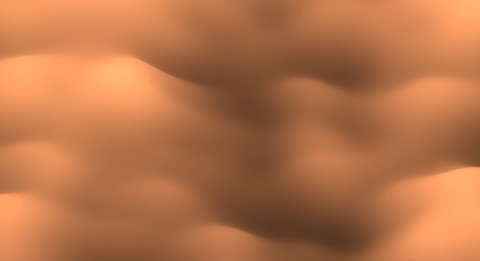nullprogram.com/blog/2012/01/19/
(The author is currently open to employment opportunities in the United
States.)
At work I’ve recently been generating
viewsheds over
DTED sets. Earlier this week I
was asked to give an informal presentation on what I was doing. I
wanted some terrain that demonstrated some key features, such as
vision being occluded by hills of varying heights. Rather than search
through the available DTED files for something good, I opted for
generating my own terrain, using an old trick of mine:
my noise “cloud” generator. That’s a lesson in
the usefulness of maintaining a blog. The useful things you learn and
create are easy to revisit years later!
I generated some noise, looked at it with surf(), and repeated until
I found something useful. (Update June 2012: the function is called
perlin() but it’s not actually Perlin noise.)
m = perlin(1024);
surf(m);
The generated terrain is really quite rough, so I decided to smooth it
out by convolving it with a 2-dimensional Gaussian kernel.
k = fspecial('gaussian', 9);
ms = conv2(m, k, 'same');
It still wasn’t smooth enough. So I repeated the process a bit,
for i = 1:10
ms = conv2(ms, k, 'same');
end
Perfect! I used that for my presentation. However, I was having fun
and decided to experiment more with this. I filtered it again another
1000 times and generated a surf() plot with a high-resolution
colormap — the default colormap size caused banding.
colormap(copper(1024));
surf(ms, 'EdgeAlpha', 0);
axis('equal');
It produced this beautiful result!

I think it looks like a photograph from a high-powered microscope, or
maybe the turbulent surface of some kind of creamy beverage being
stirred.
At work when I need something Matlab-ish, I use Octave about half the
time and Matlab the other half. In this case, I was using
Matlab. Octave doesn’t support the EdgeAlpha property, nor the
viewshed() function that I needed for my work. Matlab currently
makes much prettier plots than Octave.